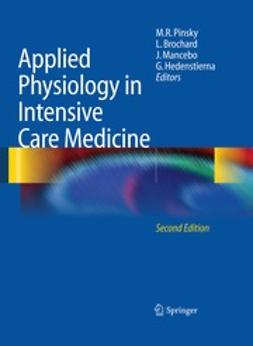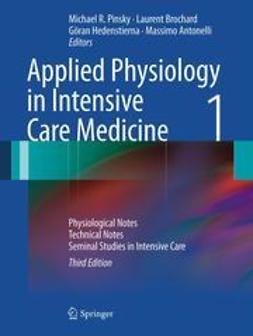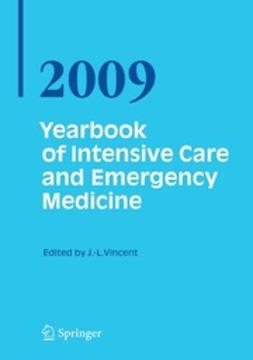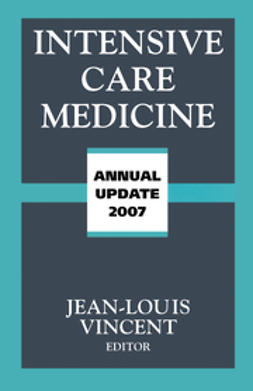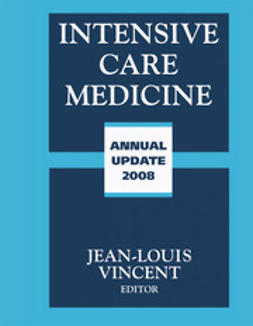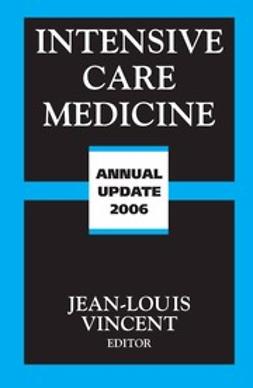Pinsky, Michael R.
Applied Physiology in Intensive Care Medicine 2
1. Physiological Reviews
1. Fluid responsiveness in mechanically ventilated patients: a review of indices used in intensive care
Karim Bendjelid, Jacques-A. Romand
2. Different techniques to measure intra-abdominal pressure (IAP): time for a critical re-appraisal
Manu L. N. G. Malbrain
3. Tissue capnometry: does the answer lie under the tongue?
Alexandre Toledo Maciel, Jacques Creteur, Jean-Louis Vincent
4. Noninvasive monitoring of peripheral perfusion
Alexandre Lima, Jan Bakker
5. Ultrasonographic examination of the venae cavae
François Jardin, Antoine Vieillard-Baron
6. Passive leg raising
Xavier Monnet, Jean-Louis Teboul
7. Sleep in the intensive care unit
Sairam Parthasarathy, Martin J. Tobin
8. Magnesium in critical illness: metabolism, assessment, and treatment
Luis J. Noronha, George M. Matuschak
9. Pulmonary endothelium in acute lung injury: from basic science to the critically ill
S. E. Orfanos, I. Mavrommati, I. Korovesi, C. Roussos
10. Pulmonary and cardiac sequelae of subarachnoid haemorrhage: time for active management?
C. S. A. Macmillan, I. S. Grant, P. J. D. Andrews
11. Permissive hypercapnia — role in protective lung ventilatory strategies
John G. Laffey, Donall O’Croinin, Paul McLoughlin, Brian P. Kavanagh
12. Right ventricular function and positive pressure ventilation in clinical practice:
from hemodynamic subsets to respirator settings
François Jardin, Antoine Vieillard-Baron
13. Acute right ventricular failure—from pathophysiology to new treatments
Alexandre Mebazaa, Peter Karpati, Estelle Renaud, Lars Algotsson
14. Red blood cell rheology in sepsis
M. Piagnerelli, K. Zouaoui Boudjeltia, M. Vanhaeverbeek, J.-L. Vincent
15. Stress-hyperglycemia, insulin and immunomodulation in sepsis
Paul E. Marik, Murugan Raghavan
16. Hypothalamic-pituitary dysfunction in critically ill patients with traumatic
and nontraumatic brain injury
Ioanna Dimopoulou, Stylianos Tsagarakis
17. Matching total body oxygen consumption and delivery: a crucial objective?
Pierre Squara
18. Normalizing physiological variables in acute illness: five reasons for caution
Brian P. Kavanagh, L. Joanne Meyer
19. Interpretation of the echocardiographic pressure gradient across a pulmonary artery band in the setting of a univentricular heart
Shane M. Tibby, Andrew Durward
20. Ventilator-induced diaphragm dysfunction: the clinical relevance of animal models
Theodoros Vassilakopoulos
21. Understanding organ dysfunction in hemophagocytic lymphohistiocytosis
Caroline Créput, Lionel Galicier, Sophie Buyse, Elie Azoulay
22. What is normal intra-abdominal pressure and how is it affected by positioning, body mass and positive end-expiratory pressure?
B. L. Keulenaer, J. J. Waele, B. Powell, M. L. N. G. Malbrain
23. Determinants of regional ventilation and blood flow in the lung
Robb W. Glenny
24. The endothelium: physiological functions and role in microcirculatory failure during severe sepsis
H. Ait-Oufella, E. Maury, S. Lehoux, B. Guidet, G. Offenstadt
25. Vascular hyporesponsiveness to vasopressors in septic shock: from bench to bedside
B. Levy, S. Collin, N. Sennoun, N. Ducrocq, A. Kimmoun, P. Asfar, P. Perez, F. Meziani
26. Monitoring the microcirculation in the critically ill patient: current methods and future approaches
Daniel Backer, Gustavo Ospina-Tascon, Diamantino Salgado, Raphaël Favory, Jacques Creteur, Jean-Louis Vincent
27. The role of vasoactive agents in the resuscitation of microvascular perfusion and tissue oxygenation in critically ill patients
E. Christiaan Boerma, Can Ince
28. Interpretation of blood pressure signal: physiological bases, clinical relevance, and objectives during shock states
J.-F. Augusto, J.-L. Teboul, P. Radermacher, P. Asfar
29. Deadspace ventilation: a waste of breath!
Pratik Sinha, Oliver Flower, Neil Soni
2. Editorials
30. The role of the right ventricle in determining cardiac output in the critically ill
M. R. Pinsky
31. Beyond global oxygen supply-demand relations: in search of measures of dysoxia
M. R. Pinsky
32. Breathing as exercise: The cardiovascular response to weaning from mechanical variation
Michael R. Pinsky
33. Variability of splanchnic blood flow measurements in patients with sepsis – physiology, pathophysiology or measurement errors?
S. M. Jakob, J. Takala
34. Functional hemodynamic monitoring
Michael R. Pinsky
35. Non-invasive ventilation in acute exacerbations of chronic obstructive pulmonary disease: a new gold standard?
M. W. Elliott
36. The adrenergic coin: perfusion and metabolism
Karl Träger, Peter Radermacher, Xavier Leverve
37. Death by parenteral nutrition
Paul E. Marik, Michael R. Pinsky
38. Ventilator-induced lung injury, cytokines, PEEP, and mortality: implications for practice and for clinical trials
Arthur S. Slutsky, Yumiko Imai
39. Helium in the treatment of respiratory failure: why not a standard?
Enrico Calzia, Peter Radermacher
40. Is parenteral nutrition guilty?
Peter Varga, Richard Griffiths, René Chiolero, Gérard Nitenberg, Xavier Leverve, Marek Pertkiewicz, Erich Roth, Jan Wernerman, Claude Pichard, Jean-Charles Preiser
41. Using ventilation-induced aortic pressure and flow variation to diagnose preload responsiveness
Michael R. Pinsky
42. Evaluation of left ventricular performance: an insolvable problem in human beings? The Graal quest
Alain Nitenberg
43. Evaluation of fluid responsiveness in ventilated septic patients: back to venous return
Philippe Vignon
44. Mask ventilation and cardiogenic pulmonary edema: “another brick in the wall”
Sangeeta Mehta, Stefano Nava
45. Does high tidal volume generate ALI/ARDS in healthy lungs?
Chiara Bonetto, Pierpaolo Terragni, V. Marco Ranieri
46. Weaning failure from cardiovascular origin
Christian Richard, Jean Louis Teboul
47. The hidden pulmonary dysfunction in acute lung injury
Göran Hedenstierna
48. Can one predict fluid responsiveness in spontaneously breathing patients?
Daniel Backer, Michael R. Pinsky
49. The “open lung” compromise
John J. Marini
50. Acute respiratory failure: back to the roots!
Christian Mueller
51. Is right ventricular function the one that matters in ARDS patients? Definitely yes
Antoine Vieillard-Baron
52. Strong ion gap and outcome after cardiac arrest: another nail in the coffin of traditional acid–base quantification
Patrick M. Honore, Olivier Joannes-Boyau, Willem Boer
53. Prone positioning for ARDS: defining the target
John J. Marini
Nyckelord: Medicine & Public Health, Intensive / Critical Care Medicine, Cardiology, Internal Medicine, Anesthesiology, Cardiac Surgery
- Författare
- Pinsky, Michael R.
- Brochard, Laurent
- Mancebo, Jordi
- Antonelli, Massimo
- Utgivare
- Springer
- Utgivningsår
- 2012
- Språk
- en
- Utgåva
- 1
- Sidantal
- 431 sidor
- Kategori
- Hälsa, skönhet, mode
- Format
- E-bok
- eISBN (PDF)
- 9783642282331


